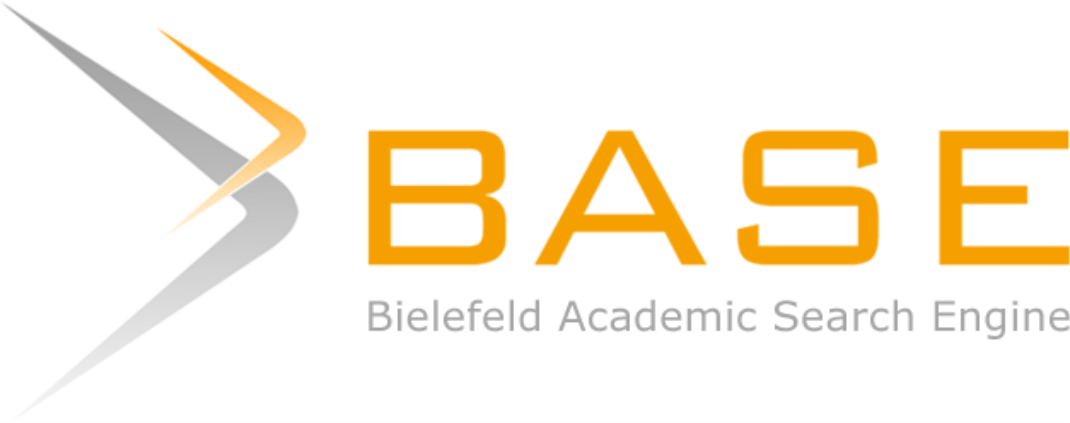Analisis Cluster Vaksinasi Covid-19 Dengan Mempertimbangkan Jumlah Permintaan Menggunakan Metode K-Means Clustering di Kabupaten Karawang
DOI:
https://doi.org/10.30737/jurmatis.v4i2.2001Keywords:
Covid-19, Cluster, Demand, Vaccination,Abstract
Since January 2020 Indonesia is affected by the pandemic of Covid-19. Immunization is the quite possibly the best endeavors to defeat the Covid-19 pandemic, which is as yet on going Currently the number of people who come for vaccination is increasing. However, there are several sub-districts that have relatively far distances from the vaccination sites determined by the government, so it is necessary to group several sub-districts into several clusters, with the aim of forming additional vaccination points by dividing the area into several locations so that they are easily accessible by the entire community of Karawang district. The examination was led utilizing an unmistakable quantitative technique with the wellspring of the information utilized in this investigation obtained from website : Covid-19 task force in the Karawang area. The information utilized in this investigation is information on June 18, 2021 which comprises of 30 locale. The technique utilized is the K-Means Clustering strategy which is prepared utilizing the SPSS 23 programming and accepts that the interest for each sub-locale is drawn closer with a positive number of Covid-19 in that sub-area. The consequences of the examination show that the sub-areas in cluster1 have 1-sub-locale, in group 2 there are 9 sub-regions and in bunch 3 there are 11 sub-regions.
Â
Negara Kepulauan Republik Indonesia terdampak pandemi Covid-19 sejak Januari 2020. Vaksinasi adalah salah satu solusi terbaik saat ini untuk melindungi dari pandemi Covid-19. Saat ini jumlah masyarakat yang datang untuk vaksinasi semakin meningkat. Namun terdapat beberapa kecamatan yang memiliki jarak relatif jauh dari tempat vaksinasi yang ditentukan oleh pemerintah, sehingga perlu dilakukan pengelompokkan beberapa kecamatan menjadi beberapa cluster, dengan tujuan membentuk tambahan titik vaksinasi dengan cara membagi wilayah menjadi beberapa lokasi agar mudah dijangkau oleh seluruh masyarakat kabupaten Karawang. Penelitian ini menggunakan cara pendekatan deskriptif kuantitatif dengan menggunakan sumber data yang digunakan dalam penelitian ini diambil  dari website. Website yang digunakan bersumber dari website milik Satgas Covid19 Kabupaten Karawang. Dalam survei ini data yang diambil  merupakan data per 18 Juni 2021 dan mencakup 30 kabupaten. Metode K – Means Clustering diolah dengan menggunakan software SPSS 23, dengan asumsi permintaan setiap kecamatan diperkirakan dari angka positif Covid 19 untuk kecamatan tersebut. Hasil penelitian menunjukkan di antaranya cluster 1 beranggotakan 10 kecamatan, cluster 2 terdiri atas 9 kecamatan dan cluster 3 mempunyai anggota 11 kecamatan.
References
T. Global and O. Alert, “Coronavirus disease 2019 ( COVID-19 ),†vol. 2019, no. April, 2020.
W. D. Nugroho, W. I. C, S. T. Alanish, N. Istiqomah, and I. Cahyasari, “Jurnal of Bionursing Literature Review : Transmisi Covid-19 dari Manusia ke Manusia Di Asia,†vol. 2, no. 2, pp. 101–112, 2020.
S. J. Daniel, “Education and the COVID-19 pandemic,†Prospects, vol. 49, no. 1–2, pp. 91–96, 2020, doi: 10.1007/s11125-020-09464-3.
A. Febriyanti, N., Choliq, M. I., & Mukti, “Hubungan tingkat pengetahuan dan kesediaan vaksinasi covid-19 pada warga kelurahan dukuh menanggal kota surabaya.,†SNHRP, pp. 36–42, 2021.
D. T. Utari, “Analisis Karakteristik Wilayah Transmisi Covid-19 dengan Menggunakan Metode K-Means Clustering,†J. Media Tek. dan Sist. Ind., vol. 5, no. 1, p. 25, 2021, doi: 10.35194/jmtsi.v5i1.1220.
S. Fardiah, L. N., Santoso, B., Ahmad, H. F., Mauladiansyah, F., Baihaqi, G., Islam, Z. Z., & Salafudin, “Analisis Bahaya Dengan Metode Hazard Identification, Risk Assessment And Risk Control (HIRARC) Di Lingkungan Sekolah Dalam Upaya Pencegahan Penyebaran Dan Penularan Covid-19.,†J. Ilm. Tek. dan Manaj. Ind. Univ. Kadiri, vol. 4, no. 1, 2020.
Agus Nur Khormarudin, “Teknik Data Mining: Algoritma K-Means Clustering,†J. Ilmu Komput., pp. 1–12, 2016.
M. K-means, D. Dwinavinta, and C. Nugraha, “Klasterisasi Judul Buku dengan Menggunakan,†pp. 1–4, 2014.
P. Govender and V. Sivakumar, Application of k-means and hierarchical clustering techniques for analysis of air pollution: A review (1980–2019), vol. 11, no. 1. Turkish National Committee for Air Pollution Research and Control, 2020.
T. Suprawoto, “Klasifikasi data mahasiswa menggunakan metode k- means untuk menunjang pemilihan strategi pemasaran,†vol. 1, no. 1, pp. 12–18, 2016.
R. Y. Poerwanto, B., & Fa’rifah, “Analisis cluster k-means dalam pengelompokan kemampuan mahasiswa,†Indones. J. Fundam. Sci., vol. 2, no. 2, pp. 92–96, 2016.
M. A. Syakur, B. K. Khotimah, E. M. S. Rochman, and B. D. Satoto, “Integration K-Means Clustering Method and Elbow Method for Identification of the Best Customer Profile Cluster,†IOP Conf. Ser. Mater. Sci. Eng., vol. 336, no. 1, 2018, doi: 10.1088/1757-899X/336/1/012017.
A. Rachman and P. S. Matematika, “Cluster Analysis Using K-Means Cluster Algorithm For Clustering Types,†vol. 2, no. 1, pp. 15–27, 2019.
W. M. P. Dhuhita, “Clustering Menggunakan Metode K-Means Untuk,†J. Inform., vol. 15, no. 2, pp. 160--174, 2016.
K. U. Pengelompokkan, K. Kota, M. W. Talakua, Z. A. Leleury, and A. W. Talluta, “Analisis Cluster Dengan Menggunakan Metode K - Means,†vol. 11, pp. 119–128, 2017.
Y. Darmi, A. Setiawan, J. Bali, K. Kampung Bali, K. Teluk Segara, and K. Bengkulu, “Penerapan Metode Clustering K-Means Dalam Pengelompokkan Penjualan Produk,†2016.
J. Xiao, J. Lu, and X. Li, “Davies Bouldin Index based hierarchical initialization K-means,†Intell. Data Anal., vol. 21, no. 6, pp. 1327–1338, 2017, doi: 10.3233/IDA-163129.
Annas, “Analisis Multivariat Clustering K-Means Pada Kabupaten/Kota Di Provinsi Jawa Tengah Berdasarkan Indeks Pembangunan Manusia Tahun 2017 Dengan Bantuan Software Spss,†2015.
C. Yuan and H. Yang, “Research on K-Value Selection Method of K-Means Clustering Algorithm,†J, vol. 2, no. 2, pp. 226–235, 2019, doi: 10.3390/j2020016.
Y. D. Darmi and A. Setiawan, “Penerapan Metode Clustering K-Means Dalam Pengelompokan Penjualan Produk,†J. Media Infotama, vol. 12, no. 2, pp. 148–157, 2017, doi: 10.37676/jmi.v12i2.418.
W. Mega, “Clustering Menggunakan Metode K-Means Untuk Menentukan Status Gizi Balita,†2015.
D. Y. Nugroho, A. Wibowo, F. Kesehatan, and M. Universitas, “Analisis Cluster K - Means Kabupaten / Kota Di Jawa Timur Berdasarkan Level Epidemik HIV Cluster K - Means Analysis Of The HIV Epidemic Level In,†vol. 8, no. 2, pp. 108–117, 2019, doi: 10.20473/jbk.v8i2.2019.108.
Downloads
Published
Issue
Section
License
Authors who publish with this journal agree to the following terms:
(1) The copyright of published articles will be transferred to the journal as the publisher of the manuscript. Therefore, the author needs to confirm that the copyright has been managed by the publisher with the Publication Right Form which must be attached when submitting the article.
(2) Publisher of JURMATIS is Kadiri University.
(3) The copyright follows Creative Commons Attribution“ShareAlike License (CC BY SA): This license allows to Share copy and redistribute the material in any medium or format, Adapt remix, transform, and build upon the material, for any purpose, even commercially.



















